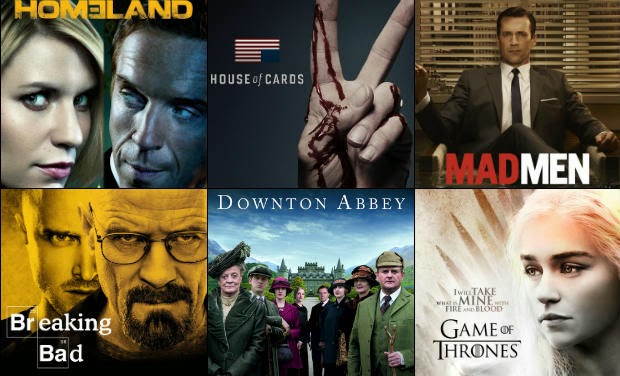Key to understanding the purpose of the footage or the issues being portrayed. Every cut or effect is there for a reason, but editing is meant to be 'hidden' so you don't even realise it's happening - this makes it one of the hardest areas of textual analysis to spot and discuss.
Editing Techniques
Cut.
Sudden change of shot from
one viewpoint or location to another. On television cuts occur on average about
every 7 or 8 seconds. Cutting may:
- change the scene;
- compress time;
- vary the point of
view; or
- build up an image
or idea
Less abrupt transitions are
achieved with the fade, dissolve, and wipe.
Matched cut.
In a 'matched cut' a
familiar relationship between the shots may make the change seem smooth:
- continuity of
direction;
- completed
action;*
- a similar centre
of attention in the frame;
- a one-step change
of shot size (e.g. long to medium);
- a change of angle
(conventionally at least 30 degrees)
*The cut is usually made on
an action (for example, a person begins to turn towards a door in one shot; the
next shot, taken from the doorway, catches him completing the turn). Because
the viewer's eye is absorbed by the action he is unlikely to notice the
movement of the cut itself.
Jump cut.
Abrupt switch from one scene
to another which may be used deliberately to make a dramatic point. Sometimes
boldly used to begin or end action. Alternatively, it may be result of poor
pictorial continuity, perhaps from deleting a section.
Motivated cut.
Cut made just at the point
where what has occurred makes the viewer immediately want to see something
which is not currently visible (causing us, for instance, to accept compression
of time). A typical feature is the shot/reverse shot technique (cuts coinciding
with changes of speaker). Editing and camera work appear to be determined by
the action. It is intimately associated with the 'privileged point of view'
(see narrative style: objectivity).
Cutting rate.
Frequent cuts may be used as
deliberate interruptions to shock, surprise or emphasize.
Cutting rhythm.
A cutting rhythm may be progressively
shortened to increase tension. Cutting rhythm may create an exciting, lyrical
or staccato effect in the viewer.
Cross-cut.
A cut from one line of action
to another. Also applied as an adjectuve to sequences which use such cuts.
Cutaway/cutaway shot (CA).
A bridging, intercut shot
between two shots of the same subject. It represents a secondary activity
occurring at the same time as the main action. It may be preceded by a definite
look or glance out of frame by a participant, or it may show something of which
those in the preceding shot are unaware. (See narrative style: parallel
development) It may be used to avoid the technical ugliness of a 'jump cut'
where there would be uncomfortable jumps in time, place or viewpoint. It is
often used to shortcut the passing of time.
Reaction shot.
Any shot, usually a cutaway,
in which a participant reacts to action which has just occurred.
Insert/insert shot.
A bridging close-up shot
inserted into the larger context, offering an essential detail of the scene (or
a reshooting of the action with a different shot size or angle.)
Buffer shot (neutral shot).
A bridging shot (normally
taken with a separate camera) to separate two shots which would have reversed
the continuity of direction.
Fade, dissolve (mix).
Both fades and dissolves are
gradual transitions between shots. In a fade the picture gradually appears from
(fades in) or disappears to (fades out) a blank screen. A slow fade-in is a
quiet introduction to a scene; a slow fade-out is a peaceful ending. Time
lapses are often suggested by a slow fade-out and fade-in. A dissolve (or mix)
involves fading out one picture while fading up another on top of it. The
impression is of an image merging into and then becoming another. A slow mix
usually suggests differences in time and place. Defocus or ripple dissolves are
sometimes used to indicate flashbacks in time.
Superimpositions.
Two of more images placed
directly over each other (e.g. and eye and a camera lens to create a visual
metaphor).
Wipe.
An optical effect marking a
transition between two shots. It appears to supplant an image by wiping it off
the screen (as a line or in some complex pattern, such as by appearing to turn
a page). The wipe is a technique which draws attention to itself and acts as a
clear marker of change.
Inset.
An inset is a special visual
effect whereby a reduced shot is superimposed on the main shot. Often used to
reveal a close-up detail of the main shot.
Split screen.
The division of the screen
into parts which can show the viewer several images at the same time (sometimes
the same action from slightly different perspectives, sometimes similar actions
at different times). This can convey the excitement and frenzy of certain
activities, but it can also overload the viewer.
Stock shot.
Footage
already available and used for another purpose than the one for which it was
originally filmed.
Task:
Split into groups of 2/3; you will be given 23 seconds of the clip below to explore.
Read through the editing techniques hand out
Analyse the 23 seconds of the clip for the techniques. Look firstly at identifying the type of editing, and then consider what it symbolises or represents. Make sure you screen shot your editing in action.
Be prepared to present your section to the class; you are teaching them about what your section of the clip and what it represents. So be thorough!
Post the video, and write up the complete analysis (including all 3.33 minutes) on your blog.
